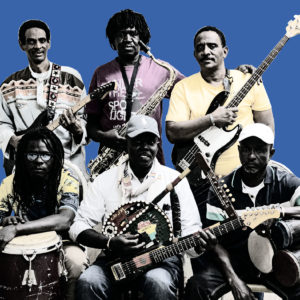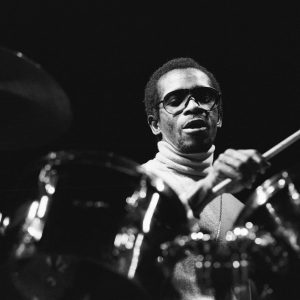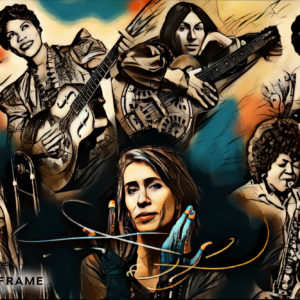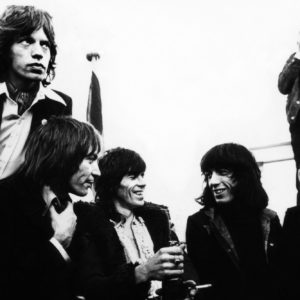Oumou Sangaré’s trans-Atlantic blues
The Malian superstar’s new album Timbuktu is a thrilling fusion of folk music from West Africa and the United States.
Author:
27 May 2022

The first five seconds of Wassulu Don sound like something from the Detroit blues era of the 1940s that brought us the world of John Lee Hooker. Then the voice of Malian superstar Oumou Sangaré drops in while a kamele ngoni riff from Mamadou Sidibe circulates behind her, just beneath handclaps and some scorching Hooker-esque guitar courtesy of Pascal Danaë.
Then Frenchman Laurent Vernerey’s thick bass arrives, sparse at first but building to take control of a rhythm in which the folk music of the West African Wassoulou region rubs up against American folk.
The melding of these two worlds is at the heart of Sangaré’s new album Timbuktu, which dropped on World Circuit Records at the end of April. It is most evident in the trans-Atlantic interplay between Danaë’s guitar and Sidibe’s ngoni.
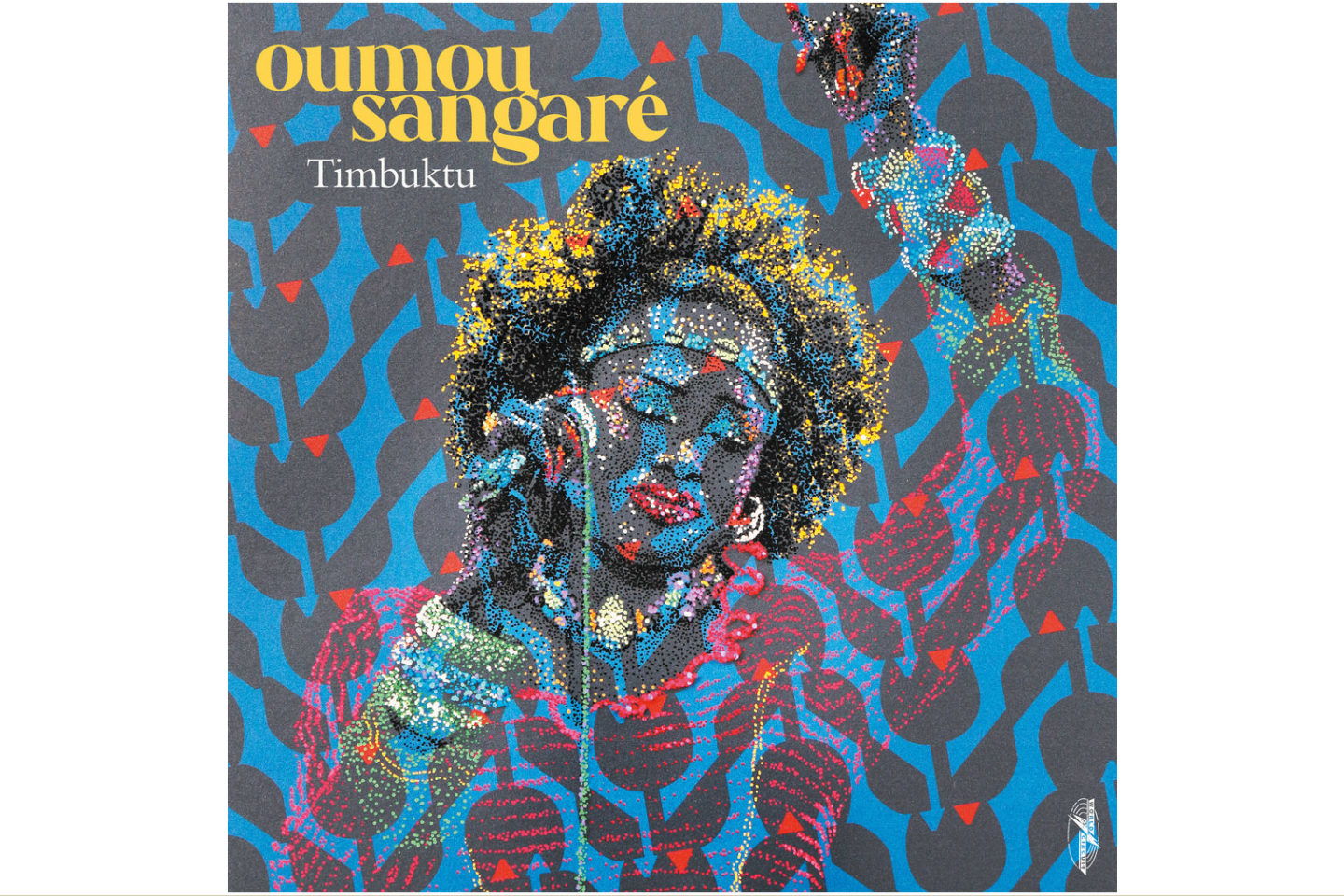
Danaë is a French guitarist and composer, with roots in Guadeloupe, while Sidibe has been Sangaré’s kamele ngoni player since the start of her career more than 30 years ago.
The love song Kanou is an exquisitely arranged string piece, where Sidibe’s ngoni, Cheick Diabate’s banjo and Danaë’s slide guitar and dobro combine to spectacular effect. On Degui N’Kelena, Danaë’s gorgeous slide guitar punctuates Sangaré’s vocals, while Sidibe provides a stunning bedrock of shimmering ngoni.
The songbird of Wassoulou
Born in 1968, Sangaré was already a West African superstar with the release of her first cassette tape Moussolou at 21. Her music was rooted in the traditions of the Wassoulou region, where southwestern Mali, eastern Guinea and northwestern Ivory Coast meet.
Moussolou, which translates as “the women” in Bambara, quickly established Sangaré as an African feminist icon with her songs about the evils of polygamy, forced marriage and female genital mutilation. It was clear that Sangaré, known today as the songbird of Wassoulou, had a voice to be reckoned with, so it was hardly surprising that World Circuit Records came calling.
Related article:
World Circuit would reissue Moussolou in 1990 and follow it with Sangaré’s 1993 album Ko Sira. Her third album Worotan was her major label debut.
Dropping on Warner’s Nonesuch label in 1996, Worotan saw Sangaré breaking the traditional mould of her first two albums ever so slightly, by including a horn section for the first time, allowing for a more soulful sound. However, her music remained rooted in the taut rhythms of the Wassoulou.
Then, as the 1990s moved into the 2000s, things went quiet on the Sangaré front. She had pulled back from her music career, choosing to focus on business ventures and humanitarian pursuits, which continue today.
An eight-year cycle
Sangaré’s career may have begun with three albums in seven years, but it was an eight-year wait for 2009’s Seya, which featured a stunning 47 collaborators.
Joining Sangaré on what was at the time her best album were legends such Malian composer Cheick-Tidiane Seck, James Brown alumni Pee Wee Ellis and Fred Wesley, Rail Band guitarist Djelimady Tounkara and afrobeat drummer Tony Allen.
Seya was nominated for the best contemporary world music album at the Grammy Awards in 2010, ultimately losing out to labelmates Amadou & Mariam’s fantastic Welcome To Mali.
Related article:
With a business empire and humanitarian pursuits demanding more and more of her time, the gestation period for each batch of new Sangaré songs was settling into an eight-year cycle. The next Sangaré record Mogoya arrived in May 2017, on Laurent Bizot’s label No Format.
Mogoya saw Sangaré striking out in a stripped back, more experimental direction. The traditional sounds of the ngoni, karignan and calabash were joined by synthesisers, snaking electric guitar and distorted electric piano under the watchful eyes of French production team A.l.b.e.r.t, which had worked previously with alt-rockers Franz Ferdinand.
The album was followed in 2018 by Mogoya Remixed and in 2020 by Acoustic. The former presented reworkings by the likes of French jazz-house purveyor St Germain, British sound artist Auntie Flo and South Africa’s Spoek Mathambo. The latter presented stripped-back acoustic versions of the songs, recorded live in the studio over two days.
Locked down in Baltimore
In March 2020, three months before Acoustic was scheduled for release, Sangaré arrived in the United States for what was meant to be a couple of weeks.
As the world suddenly went into Covid-19 lockdowns, she found herself stranded in New York. As she told online magazine World Music Central in May, Sangaré ended up in the city of Baltimore. “Something in that city drew me in straight away. I felt so good there that I bought a house.” It was in this house in Baltimore that 10 of the 11 songs that make up her new record Timbuktu were written, alongside Sidibe.
“Since 1990, I’ve never had a chance to cut myself off from the world and devote myself exclusively to music,” Sangaré told World Music Central. “I think you feel it in the music, but also in the lyrics, which are the fruits of all those moments when I was able to withdraw into myself and meditate.”
Related article:
Sangaré and Sidibe began recording the new songs in Baltimore, which then went to Eliéser Oubda and Nicolas Quéré in Mali and France respectively for further work.
Quéré, a French producer and engineer, co-produces Timbuktu alongside Danaë, who has worked with stars such as Peter Gabriel, Gilberto Gil, Youssou N’Dour and Neneh Cherry over the years.
Trans-Atlantic dialogue
The two producers can be found all over the album as musicians, too. Quéré pops up on piano, clarinet, keyboards, synthesisers and percussion while Danaë features on dobro, guitar, keyboards, piano, percussion, slide guitar, synthesisers and backing vocals. But there is still space for other star guests.
World-renowned Balafon virtuoso Balla Kouyaté stars on Kêlê Magni, locking into a powerful groove with Sidibe’s ngoni to create a fiery song punctuated by Danaë’s distorted guitar riffs and haunting slide guitar runs. It’s a fitting musical body for a song that addresses the violence that has gripped Mali in the recent past.
As the album comes to a close with Sabou Dogoné, an ancestral song of Wassoulou that Sangaré sings over strange ambient church organ sounds and synth pads, the sheer scope of what she has achieved comes into view.
Related article:
It’s clear that Sangaré has created a fascinating album engaged in a trans-Atlantic dialogue like a handful of other great albums that came before it. These include Ali Farka Toure and Ry Cooder’s 1994 collaboration Talking Timbuktu, Taj Mahal and Toumani Diabate’s 1999 collaboration Kulunjan and World Circuit’s 2010 album AfroCubism, which features Cuban guitarist Eliades Ochoa alongside Malian ngoni maestro Bassekou Kouyaté and the legendary Tounkara.
While these records have already achieved classic status and Timbuktu is less than a month old, when we sit back many years from now and survey Sangaré’s full musical career, Timbuktu will be without doubt a landmark album that we look back at with awe.

